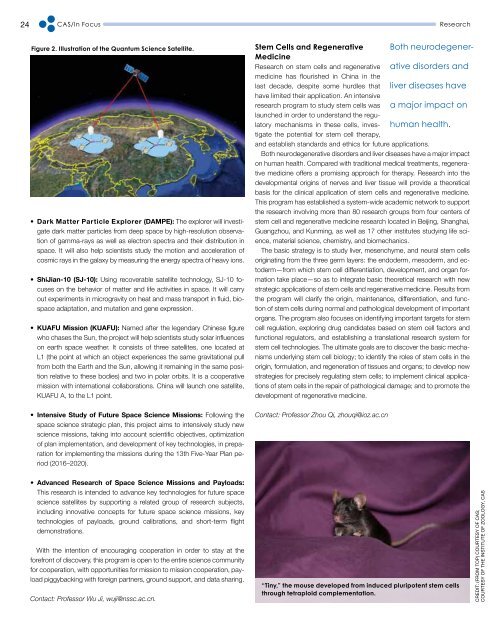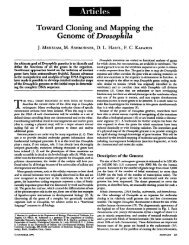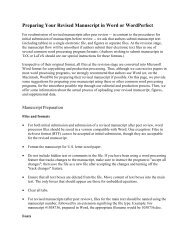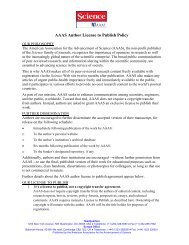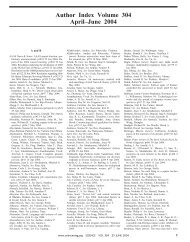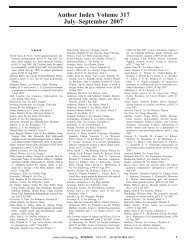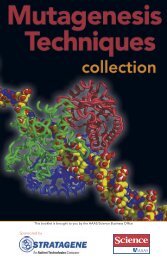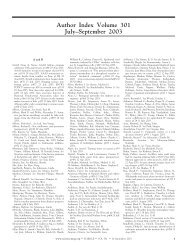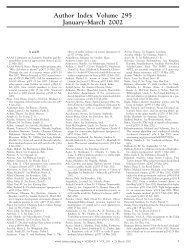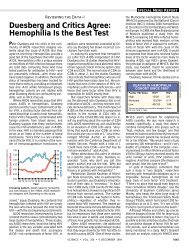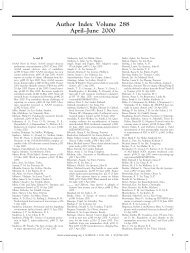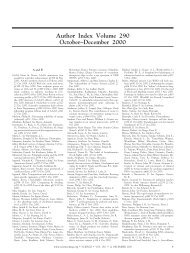Chinese Academy of Sciences (PDF) - low res version
Chinese Academy of Sciences (PDF) - low res version
Chinese Academy of Sciences (PDF) - low res version
Create successful ePaper yourself
Turn your PDF publications into a flip-book with our unique Google optimized e-Paper software.
24<br />
CAS/In Focus<br />
Figure 2. Illustration <strong>of</strong> the Quantum Science Satellite.<br />
• Dark Matter Particle Explorer (DAMPE): The explorer will investigate<br />
dark matter particles from deep space by high-<strong>res</strong>olution observation<br />
<strong>of</strong> gamma-rays as well as electron spectra and their distribution in<br />
space. It will also help scientists study the motion and acceleration <strong>of</strong><br />
cosmic rays in the galaxy by measuring the energy spectra <strong>of</strong> heavy ions.<br />
• ShiJian-10 (SJ-10): Using recoverable satellite technology, SJ-10 focuses<br />
on the behavior <strong>of</strong> matter and life activities in space. It will carry<br />
out experiments in microgravity on heat and mass transport in fluid, biospace<br />
adaptation, and mutation and gene exp<strong>res</strong>sion.<br />
• KUAFU Mission (KUAFU): Named after the legendary <strong>Chinese</strong> figure<br />
who chases the Sun, the project will help scientists study solar influences<br />
on earth space weather. It consists <strong>of</strong> three satellites, one located at<br />
L1 (the point at which an object experiences the same gravitational pull<br />
from both the Earth and the Sun, al<strong>low</strong>ing it remaining in the same position<br />
relative to these bodies) and two in polar orbits. It is a cooperative<br />
mission with international collaborations. China will launch one satellite,<br />
KUAFU A, to the L1 point.<br />
• Intensive Study <strong>of</strong> Future Space Science Missions: Fol<strong>low</strong>ing the<br />
space science strategic plan, this project aims to intensively study new<br />
science missions, taking into account scientific objectives, optimization<br />
<strong>of</strong> plan implementation, and development <strong>of</strong> key technologies, in preparation<br />
for implementing the missions during the 13th Five-Year Plan period<br />
(2016–2020).<br />
Research<br />
Stem Cells and Regenerative Both neurodegener-<br />
Medicine<br />
Research on stem cells and regenerative ative disorders and<br />
medicine has flourished in China in the<br />
last decade, despite some hurdles that liver diseases have<br />
have limited their application. An intensive<br />
<strong>res</strong>earch program to study stem cells was a major impact on<br />
launched in order to understand the regulatory<br />
mechanisms in these cells, inves- human health.<br />
tigate the potential for stem cell therapy,<br />
and establish standards and ethics for future applications.<br />
Both neurodegenerative disorders and liver diseases have a major impact<br />
on human health. Compared with traditional medical treatments, regenerative<br />
medicine <strong>of</strong>fers a promising approach for therapy. Research into the<br />
developmental origins <strong>of</strong> nerves and liver tissue will provide a theoretical<br />
basis for the clinical application <strong>of</strong> stem cells and regenerative medicine.<br />
This program has established a system-wide academic network to support<br />
the <strong>res</strong>earch involving more than 80 <strong>res</strong>earch groups from four centers <strong>of</strong><br />
stem cell and regenerative medicine <strong>res</strong>earch located in Beijing, Shanghai,<br />
Guangzhou, and Kunming, as well as 17 other institutes studying life science,<br />
material science, chemistry, and biomechanics.<br />
The basic strategy is to study liver, mesenchyme, and neural stem cells<br />
originating from the three germ layers: the endoderm, mesoderm, and ectoderm—from<br />
which stem cell differentiation, development, and organ formation<br />
take place—so as to integrate basic theoretical <strong>res</strong>earch with new<br />
strategic applications <strong>of</strong> stem cells and regenerative medicine. Results from<br />
the program will clarify the origin, maintenance, differentiation, and function<br />
<strong>of</strong> stem cells during normal and pathological development <strong>of</strong> important<br />
organs. The program also focuses on identifying important targets for stem<br />
cell regulation, exploring drug candidates based on stem cell factors and<br />
functional regulators, and establishing a translational <strong>res</strong>earch system for<br />
stem cell technologies. The ultimate goals are to discover the basic mechanisms<br />
underlying stem cell biology; to identify the roles <strong>of</strong> stem cells in the<br />
origin, formulation, and regeneration <strong>of</strong> tissues and organs; to develop new<br />
strategies for precisely regulating stem cells; to implement clinical applications<br />
<strong>of</strong> stem cells in the repair <strong>of</strong> pathological damage; and to promote the<br />
development <strong>of</strong> regenerative medicine.<br />
Contact: Pr<strong>of</strong>essor Zhou Qi, zhouqi@ioz.ac.cn<br />
• Advanced Research <strong>of</strong> Space Science Missions and Payloads:<br />
This <strong>res</strong>earch is intended to advance key technologies for future space<br />
science satellites by supporting a related group <strong>of</strong> <strong>res</strong>earch subjects,<br />
including innovative concepts for future space science missions, key<br />
technologies <strong>of</strong> payloads, ground calibrations, and short-term flight<br />
CAS; OF<br />
demonstrations.<br />
With the intention <strong>of</strong> encouraging cooperation in order to stay at the<br />
COURTESY<br />
forefront <strong>of</strong> discovery, this program is open to the entire science community<br />
TOP)<br />
for cooperation, with opportunities for mission to mission cooperation, payload<br />
piggybacking with foreign partners, ground support, and data sharing.<br />
(FROM<br />
“Tiny,” the mouse developed from induced pluripotent stem cells<br />
through tetraploid complementation.<br />
Contact: Pr<strong>of</strong>essor Wu Ji, wuji@nssc.ac.cn. CREDIT:<br />
COURTESY OF THE INSTITUTE OF ZOOLOGY, CAS


